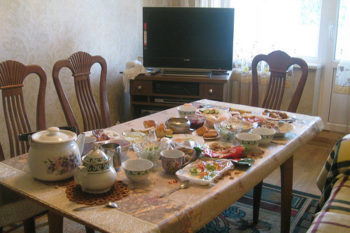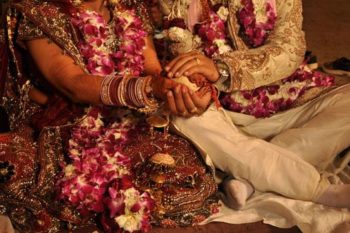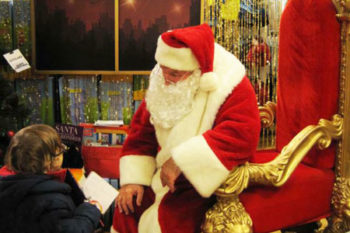¡Yo soy boricua…Sólo pa’ que tu lo sepa’! (I’m Puerto Rican… just so you know!) – Rosie Perez
Last weekend was the Puerto Rican Day Parade in downtown Chicago, and accompanying festival in the Humboldt Park neighborhood. Many people outside of the US, and some notable Americans, are unaware that the island of Puerto Rico is actually a United States commonwealth.
Since 1917, Puerto Ricans have been US citizens, and enjoy many benefits of citizenship, including passport/visa-free travel and work in the United States, and US military protection. However, Puerto Ricans (residing in Puerto Rico) cannot vote in federal elections, have no voting members in the US Congress, and yet still have to pay US federal taxes. There have been several Puerto Rican political movements for both independence and US Statehood, but as of today, Puerto Rico is still an unincorporated territory.
Puerto Rico is home to just under 4 million people (one of the most densely populated islands on the planet), and the mainland US has about 4.1 million people who self-report themselves as Puerto Rican. New York City has by far the largest number of residents of Puerto Rican descent (sometimes called “Nuyoricans”), with 784,000. One million plus live in New York State, and in the tri-state area (NY, New Jersey and Pennsylvania) 1.8 million people identified themselves as Puerto Rican. Illinois is home to about 170,000 people of Puerto Rican background, 100,000 of which live in Chicago, with most of the other 70,000 living in the surrounding suburbs. (US census 2006-2008 estimates) A large number of Puerto Ricans reside in Florida as well, particularly in the Miami area.
Puerto Ricans have been immigrating to the mainland US since the Spanish-American war, but post-World War II America saw the largest influx. A depiction of US Puerto Ricans from this era can be found in the 1950’s Musical “West Side Story,” which is basically the story of Romeo and Juliet set in Spanish Harlem, New York City… but it’s a slightly stereotypical portrayal to say the least. US and island Puerto Ricans are known for their interest in baseball and boxing, two sports introduced to the island by the US military (indeed, baseball is typically the most popular in places that experienced US military presence between 1890 and 1960: Korea, Japan, the Dominican Republic, Venezuela, Taiwan, Cuba, etc.).
Puerto Rican culture is a unique blend of Indigenous Caribbean, African, and European cultures. A lot of traditional PR foods have African origins, featuring a lot of plantain, banana, pork, and root-crops. Pernil, Alcapurria, Chuletas, Mofongo, Jibarito sandwiches (Chicago!), and the staple Arroz con Gandules are my favorites. Danza, Plena, Bomba and Salsa music all have Puerto Rican roots, as does Reggaeton, an amalgamation of dancehall, hip-hop, reggae, and Latin genres (salsa, cumbia, meringue, bachata), usually sung/rapped in Spanish or a mix of English and Spanish, and almost always against the “Dembow” beat. A few notable Puerto Ricans (mostly born in Puerto Rico) include baseball stars Roberto Clemente, Roberto Alomar, and Ivan “Pudge” Rodriguez; Merengue singer and actress Melina León, Actors Benicio del Toro and Adam Rodriguez, and musicians Tito Puente, Ricky Martin, El Gran Combo de Puerto Rico, and Don Omar.
Humboldt Park is the Puerto Rican cultural center of Chicago, and at its heart “Paseo Boricua” (“Puerto Rican Road”) is marked by two impossible to miss 59-foot, 50-ton iron Puerto Rican flags. In the HP you can find murals of famous Puerto Rican political figures that helped lead the struggle for independence from Spain, and other fantastic street art. You can also find fantastic restaurants selling traditional Puerto Rican food, and several community and cultural centers.
Humboldt Park saw a drop in Puerto Rican population of 23% between 1990 and 2000. The neighborhood has seen economic resurgence in the past 20 years, but it’s also seen its share of gentrification, which has forced out many families who can’t afford the higher rents. Gentrification is a double-edged sword; city services, infrastructure, and economic conditions improve, but the people who were living in the neighborhood often can’t afford to take advantage of the improvements. People who move into “up and coming” neighborhoods also tend to come from different cultures (usually European-American) than the culture of the neighborhood they’re moving into, which can often create tension. Humboldt Park and Spanish Harlem in New York City are no exceptions.
America’s Puerto Ricans are immensely proud of their heritage, and in Puerto Rican neighborhoods you’re likely to see Puerto Rican flags on cars, hats, shirts, and during the Parades, on literally everything. US Puerto Ricans are part of a vibrant, emotional, rich culture, and Chicago, New York, Miami, and the USA would be unrecognizable in their current form without the contributions of Puerto Rican politicians, community activists, musicians, artists, cooks, and business people. I think a lot of travelers find themselves attracted to a place or a culture that’s not their own… and well, guilty as charged. Me encanta Puerto Rico!
Read more:
Why do the Philippines and Cuba have similar flags?
African-American culture in the USA
Like to eat? Chicago has you covered









Interesting, I did not know that. Thanks, Sean.
I really appreciate your Chi-Town “shout out” on the Jibarito sandwhiches, and your summary of West Side Story: “…basically the story of Romeo and Juliet set in Spanish Harlem!” I also learned a thing or two that was new to me about PR culture- thanks!
Thanks for commenting Malii!
I know I always write this, but I always learn such a lot from your posts Sean. This one was no exception. I didn’t hear the word Boricua before. Do you know where it comes from?
Hi Liz,
Yes. The name the original inhabitants of the island gave is was “Borinken”. It’s been Espanol-ized to “Boricua”. People like to yell “Boricua” really loud at the parades every year. If you want to learn more about the Puerto Rican experience in America, I highly recommend the “Nuyorican” poet Miguel Pinero. My favorite piece by him here:
http://oldpoetry.com/opoem/37169-Miguel-Pinero-The-Book-of-Genesis-According-to-St–Miguelito
Who was the main conquistador of Puerto Rico anyways??